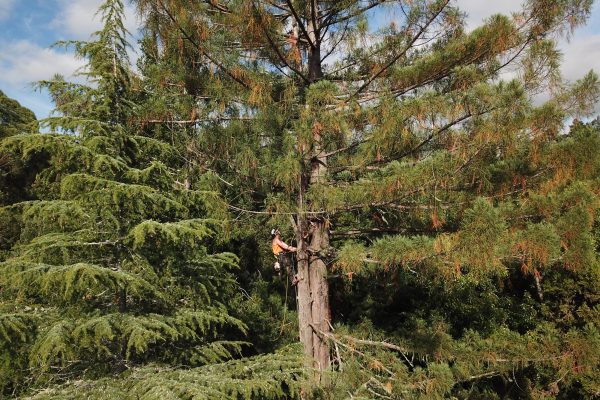Tree removal is a significant decision that should be carefully considered due to its potential impact on the environment, landscape, and property. Here are several reasons for tree removal and things to consider before removing a tree.
Reasons for tree removal:
 Diseased or Infested Trees:
Diseased or Infested Trees:
Trees that are severely diseased or infested with pests may need to be removed to prevent the spread of the disease or infestation to other trees in the vicinity.
Structural Instability:
Trees that have significant structural issues such as extensive leaning, multiple trunks, or hollowed-out sections pose a risk of falling and causing damage to
property or injury to people.
Dead Trees:
Dead trees are not only unsightly but can also be hazardous. They are more likely to fail, especially during storms or high winds, posing a danger to structures, vehicles, or people.
Root Damage:
Trees with roots that have encroached upon underground utility lines, septic systems, or foundations can cause serious damage over time, necessitating removal.
foundations can cause serious damage over time, necessitating removal.
Crowding or Overlapping:
In some cases, trees may be too close together, causing overcrowding. This can lead to competition for resources such as sunlight and nutrients, resulting in stunted growth for some trees and overall decline in health.
Landscaping and Construction:
Trees may need to be removed to make way for new construction, landscaping projects, or to clear space for utilities or infrastructure development.
Safety Concerns:
Trees that are located near power lines, buildings, or public areas may need to be removed if they pose a safety hazard due to falling branches or compromised structural integrity.
Aesthetic Reasons:
While less common, aesthetic considerations may prompt tree removal, such as when a tree obstructs a desired view or does not fit the desired landscape design.
Things to consider before removing a tree:
- Tree Species: Some tree species are more valuable ecologically or culturally, so careful consideration should be given to the species before removal.
- Environmental Impact: Removing a tree can have ecological consequences, such as habitat loss for wildlife and reduced carbon sequestration. Consider replanting trees elsewhere to mitigate these impacts.
- Permits and Regulations: Check local regulations and obtain any necessary permits before removing a tree, especially if it’s within the vicinity of powerlines, is a protected species or located in a conservation area.
- Cost and Logistics: Tree removal can be expensive, especially for large or difficult-to-access trees. Consider the cost and logistics involved in removing the tree, including hiring professionals if necessary.
- Alternatives to Removal: In some cases, pruning, bracing, or other tree care techniques may mitigate the issues without the need for complete removal. Consider alternatives to removal whenever possible.
- Future Planning: Consider the long-term implications of removing the tree, such as how it will affect the landscape, property value, and future maintenance requirements.
Overall, tree removal should be approached with caution and undertaken only after careful consideration of the reasons for removal and the potential consequences. Consulting with a certified arborist or tree removal professional can provide valuable insight and guidance in making the decision.
Need some help or advice on whether to remove a tree? Our arborists are happy to help!
Call us on 06 862 5785 or fill out the form below to get in touch.
Get in touch
"*" indicates required fields
